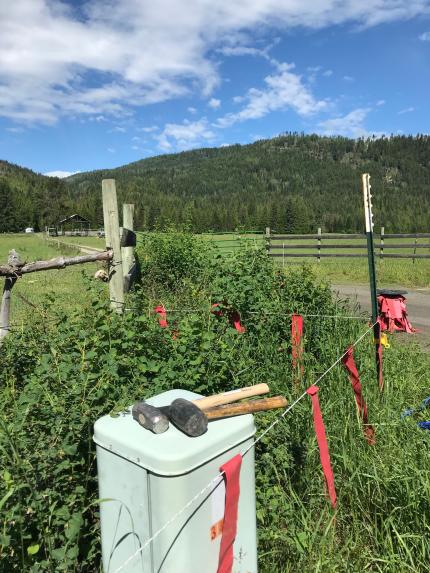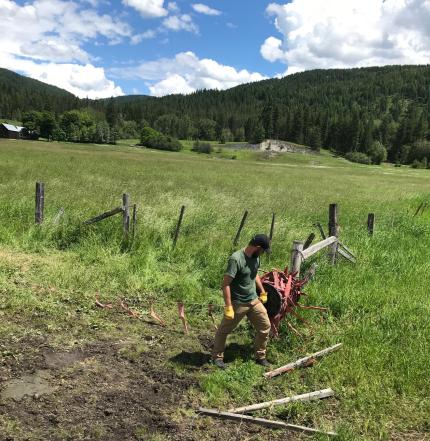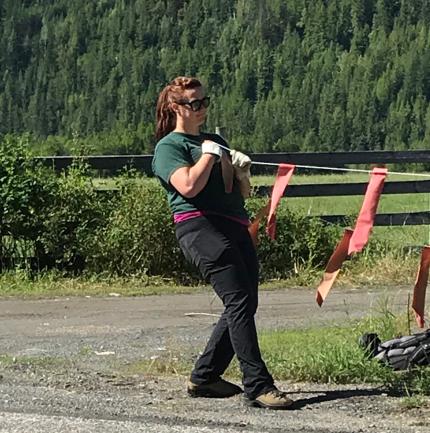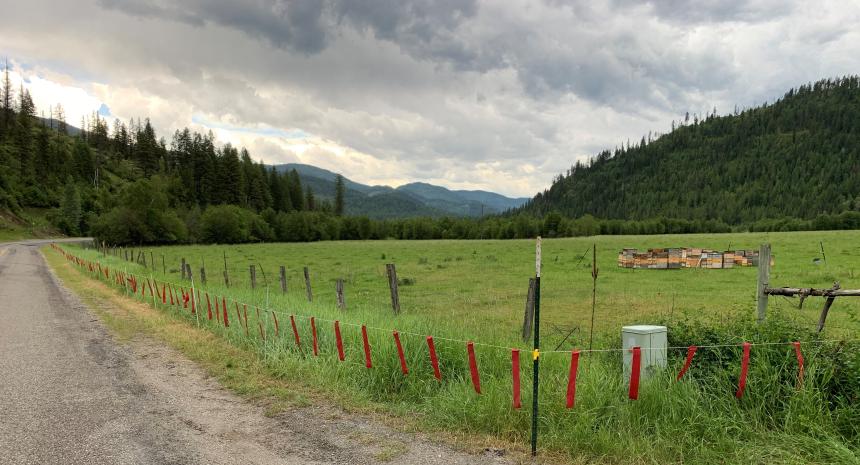On June 19, WDFW staff conducted investigations of four injured calves in a private pasture in Stevens County. These incidents occurred within the Leadpoint pack territory.
The investigations of all four injured calves revealed bite wounds and lacerations consistent with wolf depredation. The injuries to the first calf investigated were estimated to have occurred 7-10 days prior to the investigation; wounds on the second and third calves investigated were estimated to be 3-6 days old; injuries to the fourth calf were estimated to have occurred within 48 hours of the investigation. Based on the estimated ages of the injuries, WDFW staff considered these depredations as three separate events. The injured calves and their mothers were removed from the private pasture to the livestock producer’s home for further monitoring.
The combination of bite wounds and lacerations with associated hemorrhaging on all four calves, wolf tracks documented at the scene, and recent wolf locations in the area provide evidence consistent with confirmed wolf depredations.
The livestock producer who owns the affected calves had several proactive, nonlethal deterrents in place, including calving away from areas occupied by wolves, delayed turnout of calves (to coincide with deer fawns, and elk and moose calves becoming available as prey), removing sick/injured livestock from the pasture, carcass sanitation, allowing steers to heal after castration, human presence around livestock, and using Cattle Producers of Washington (CPoW) range riders.
Following the depredations, WDFW staff (including conflict specialists, wolf biologists, and district/wildlife area biologists), the Ferry/Stevens County Wildlife Specialist, and a CPoW range rider organized a coordinated work party to put up fox lights and over a mile of fladry to surround the several-hundred acre pasture.
WDFW staff will continue to work with the livestock producer and CPoW range riders to mitigate further conflict in this area.
A summary of all documented depredation activity within the past 10 months is included in every monthly wolf update.



